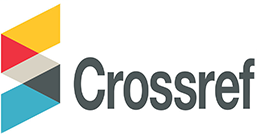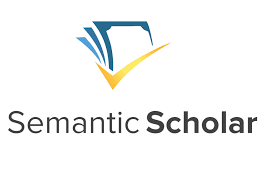Characteristics of Theatre Language and Its Translation Challenges
DOI:
https://doi.org/10.69760/aghel.0250050002Keywords:
theatre language, theatre translation, cultural adaptation, performative language, multimodalityAbstract
Theatre language is a distinctive mode of communication characterized by its performative nature, oral orientation, and integration within a multimodal artistic context. Unlike traditional literary texts, dramatic language functions not only as written material but as a blueprint for live performance, combining dialogue, physical gestures, timing, and spatial dynamics to create a holistic theatrical experience. Translating theatre texts, therefore, presents unique challenges that extend beyond linguistic equivalence to encompass cultural specificity, performative feasibility, and audience reception. This paper investigates the essential characteristics of theatre language and explores the inherent difficulties encountered in its translation across languages and cultures. Employing a qualitative methodology that includes a comprehensive literature review and comparative textual analysis of selected dramatic works—ranging from Shakespearean classics to contemporary European drama—the study identifies key features such as colloquialism, dialectal variation, wordplay, and multimodality that complicate the translation process. The results reveal that theatre translation requires creative strategies to negotiate cultural references, humor, and performative constraints, often demanding adaptive solutions rather than literal translations. The discussion highlights the translator’s role as a cultural mediator and creative collaborator within the theatrical production process. This paper contributes to the growing field of theatre translation studies by emphasizing the interplay between language, culture, and performance, and suggests directions for future research including empirical studies on audience reception and collaborative translation practices.
References
Ahmedova, G. (2025). Theatrical Structures and Performance Traditions in Azerbaijani Folklore. EuroGlobal Journal of Linguistics and Language Education, 2(3), 74-82.
Ahmadova, G. (2023). Worldly significance of theaters: Irevan State Azerbaijan Drama Theater. Scientific Journal of Polonia University, 58(3), 10-14.
Alisoy, H. (2022). A discussion of simultaneous interpretation, its challenges and difficulties with its implementation. Znanstvena Misel,(Issue Number), 40-42.
Babayev, J., & Alaviyya, N. (2023). Translation procedures of culture bound-terms (CBTs). Journal of Science. Lyon, 48.
Bassnett, S. (1991). Translation Studies (3rd ed.). Routledge.
Carlson, M. (2006). Speaking in Tongues: Languages at Play in the Theatre. University of Michigan Press.
Gulkhara, A., & Farzaliyeva, E. (2025). Theatre as a Reflection of Social Change: How Dramatic Arts Capture Cultural Shifts and Historical Transformations. Acta Globalis Humanitatis et Linguarum, 2(1), 254-261.
Gulkhara, A., & Aysu, M. (2025). HISTORICAL FIGURES OF WORLD DRAMA ON THE AZERBAIJAN STAGE. German International Journal of Modern Science/Deutsche Internationale Zeitschrift für Zeitgenössische Wissenschaft, (104).
Javid, B. Impact of socio-linguistic and socio-cultural factors on translation process. Sciences of Europe,(128).
Javid, B., & Sadikhova, S. (2025, May). Culturonyms in Food and Drink: How Language Reflects Cultural Identity Through Cuisine. In Publisher. agency: Proceedings of the 10th International Scientific Conference «Modern scientific technology»(May 29-30, 2025). Stockholm, Sweden (p. 346).
Pavis, P. (1989). Problems of translation for the stage: Interculturalism and post-modern theatre. In H. Scolnicov & P. Holland (Eds.), Theatre and the Politics of Culture (pp. 25–44). Cambridge University Press.
Sabir, B. J. (2023). Linguistic and cultural aspects of simultaneous translation. Progress in Science, (4).
Sadikhova, S., & Babayev, J. (2025). Challenges Encountered in Translation of Culture-bound and Subject-specific Terminology While Using Google Translate. EuroGlobal Journal of Linguistics and Language Education, 2(3), 119-126.
Sadikhova, S., & Babayev, J. (2025). Linguistic Analysis of Art Terms in English. Porta Universorum, 1(3), 214-223.
Snell-Hornby, M. (1988). Translation Studies: An Integrated Approach. John Benjamins.
Zatlin, P. (2005). Theatre Translation and Film Adaptation: A Practitioner's View. Multilingual Matters.
Zuber, O. (1980). The Languages of Theatre: Problems in the Translation and Transposition of Drama. Pergamon Press.
Downloads
Published
Issue
Section
License
Copyright (c) 2025 Acta Globalis Humanitatis et Linguarum

This work is licensed under a Creative Commons Attribution-NonCommercial 4.0 International License.







